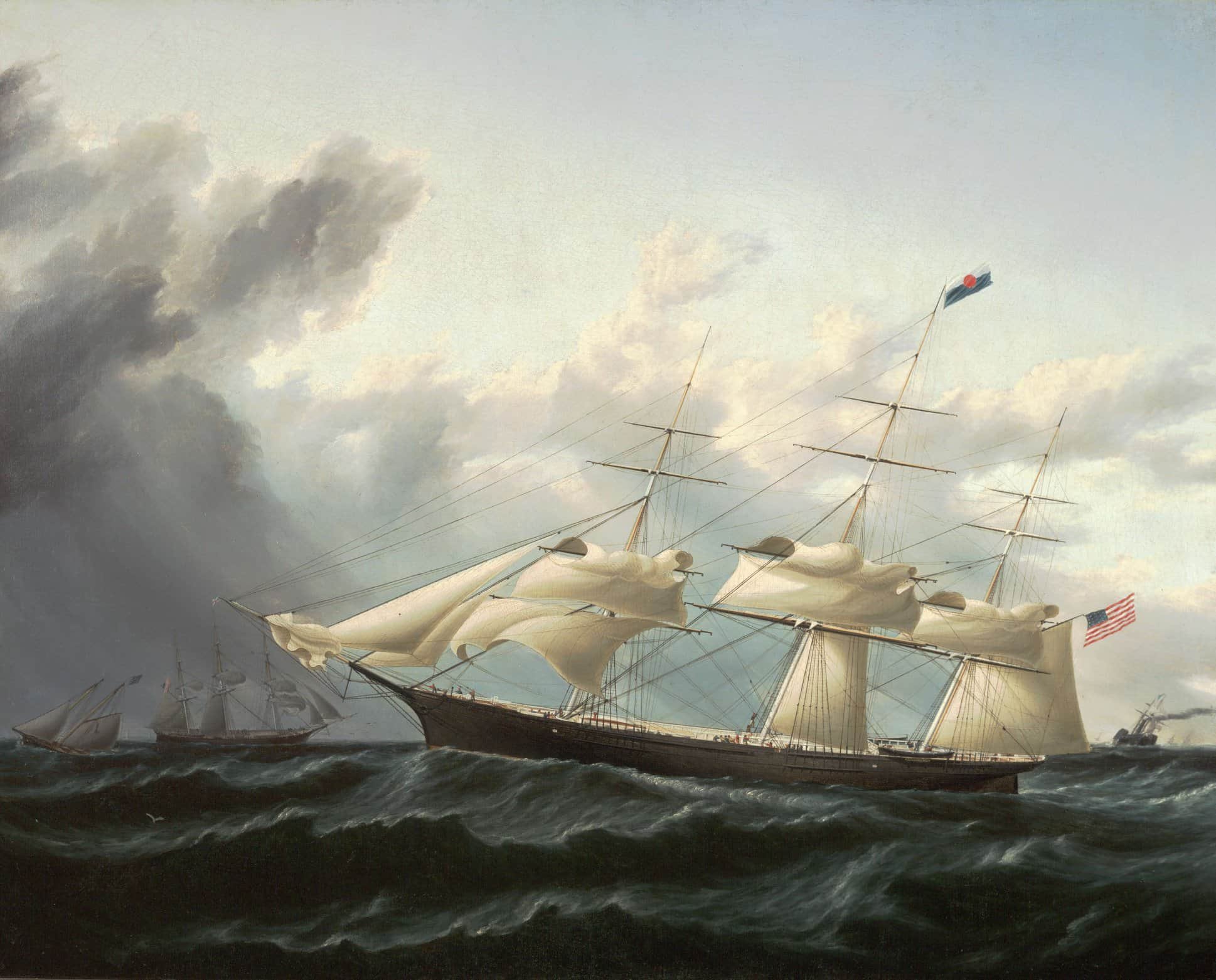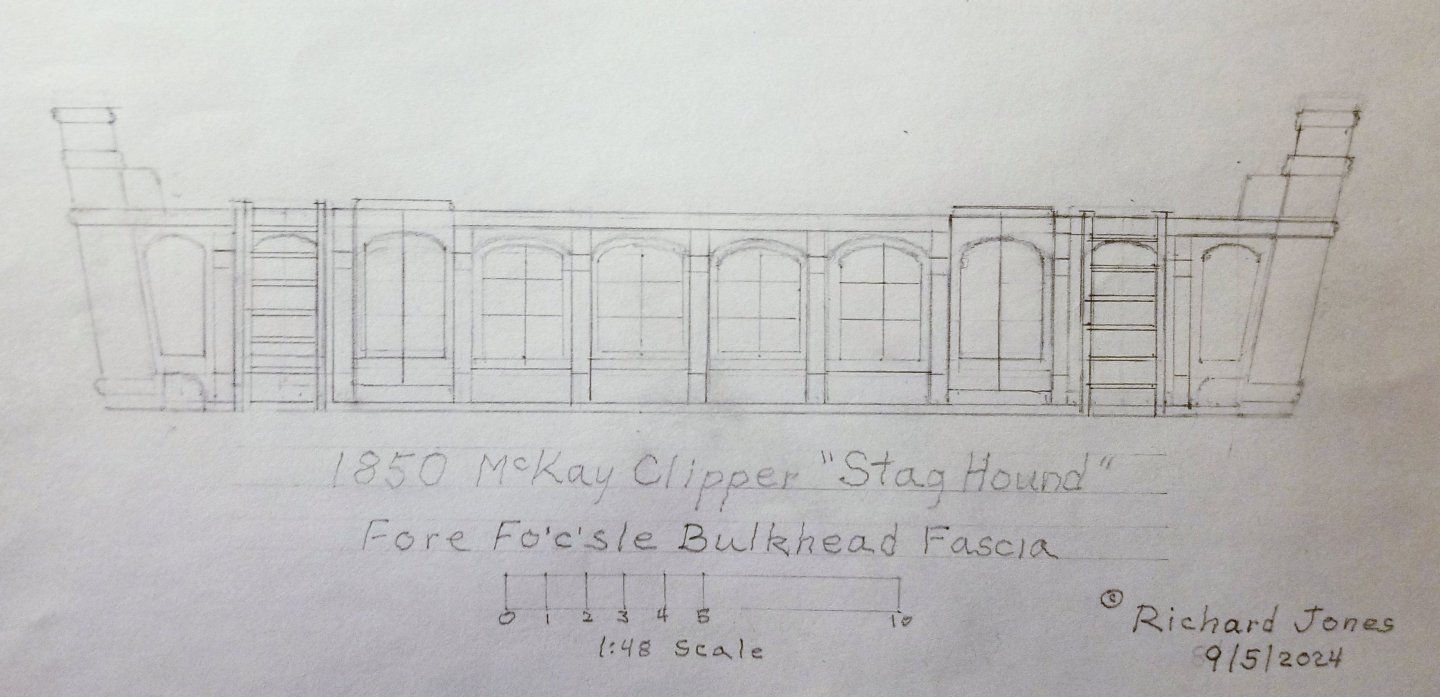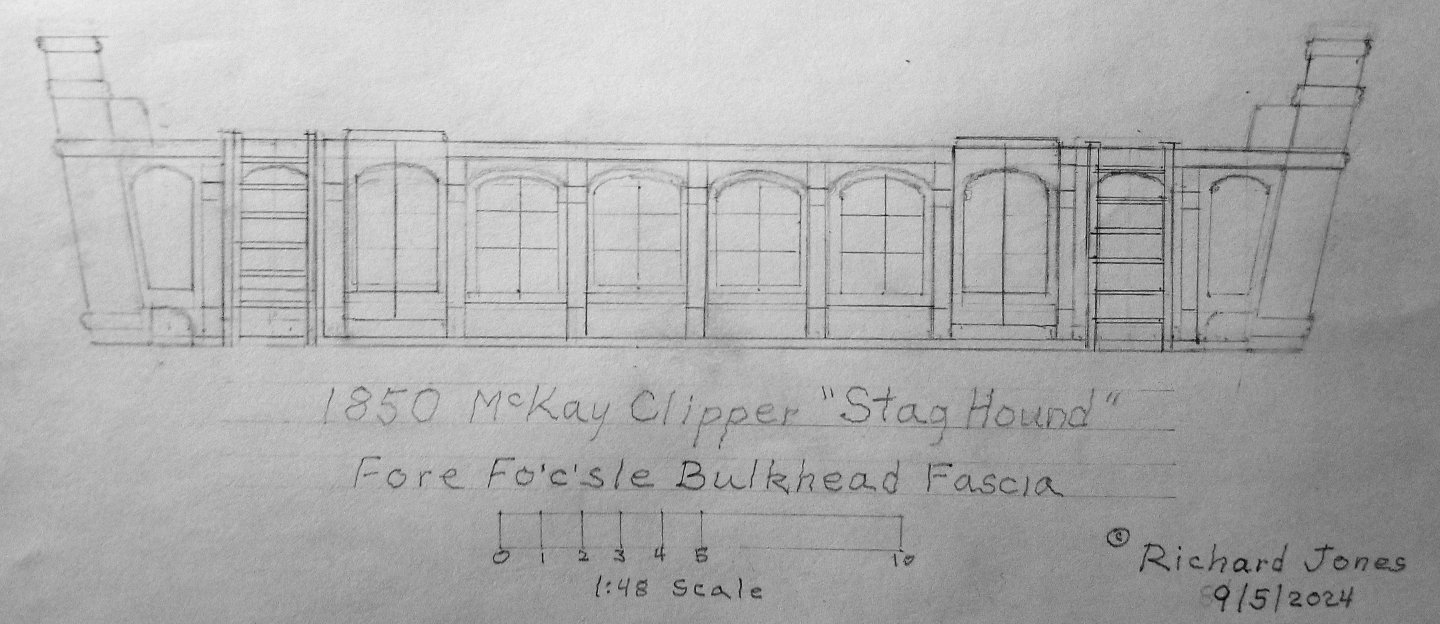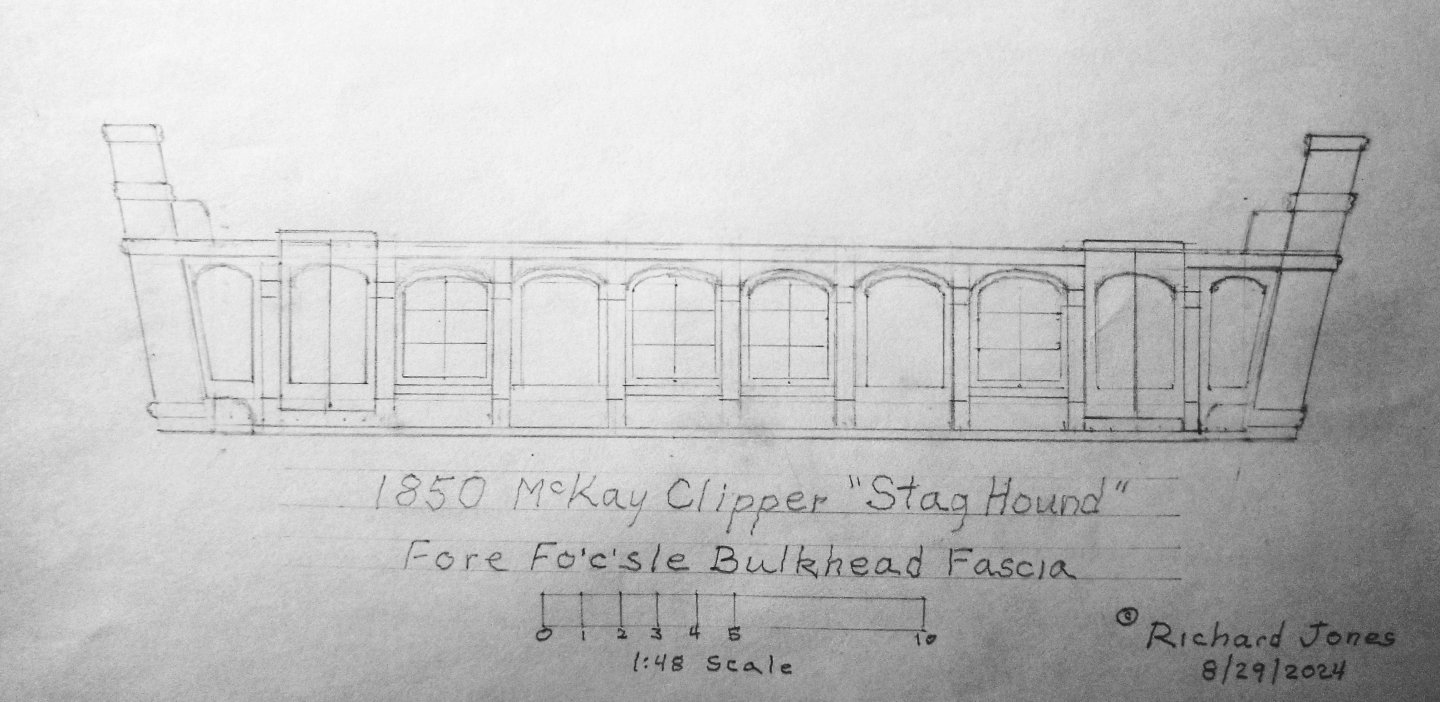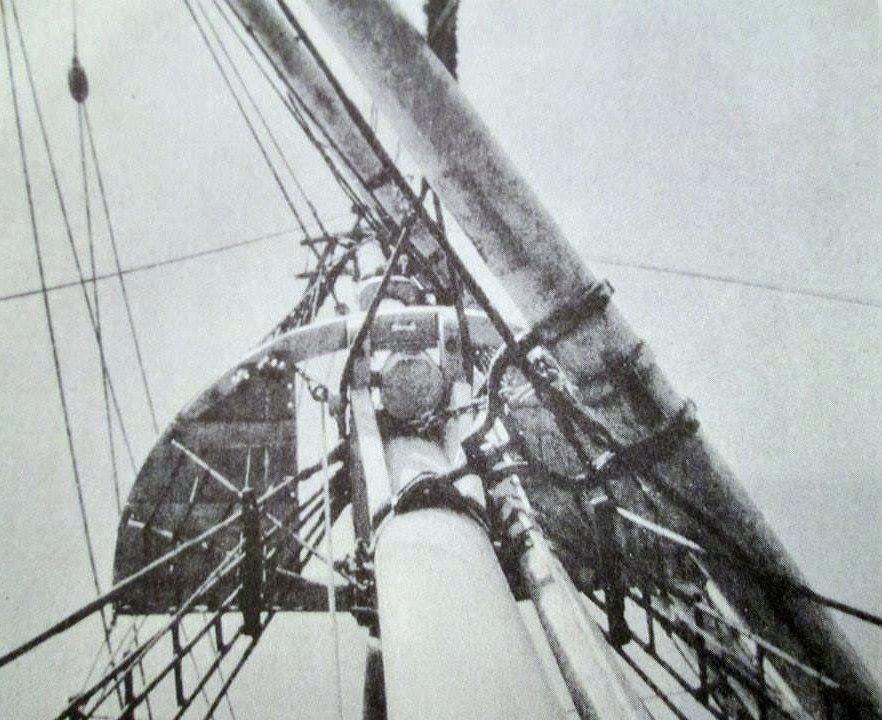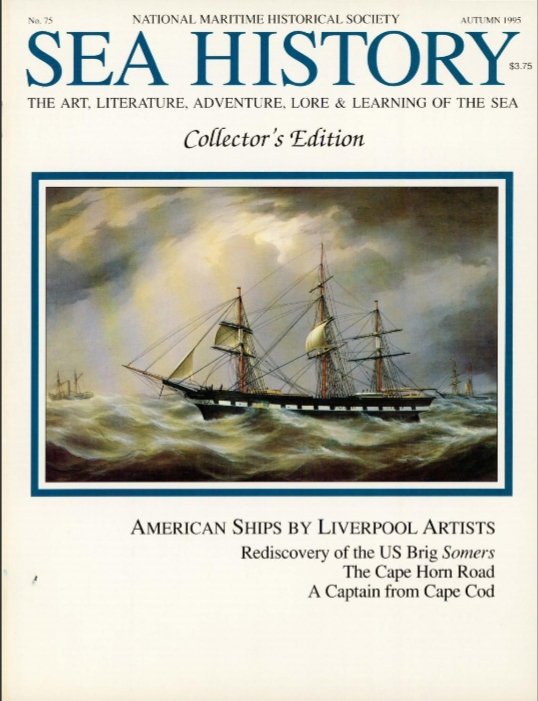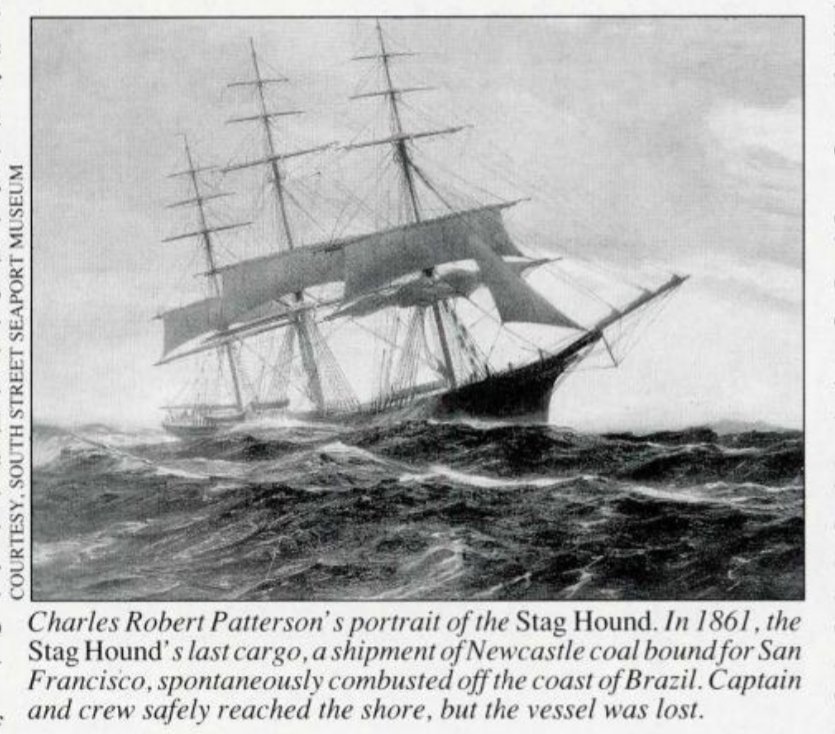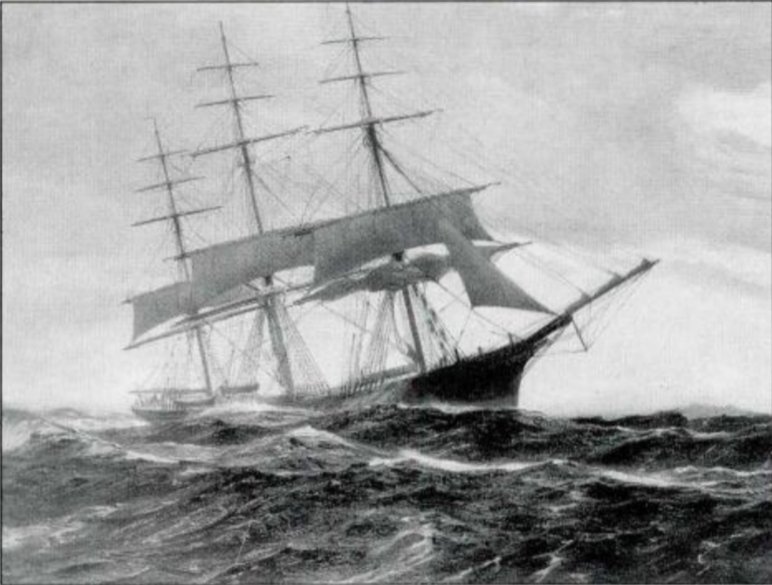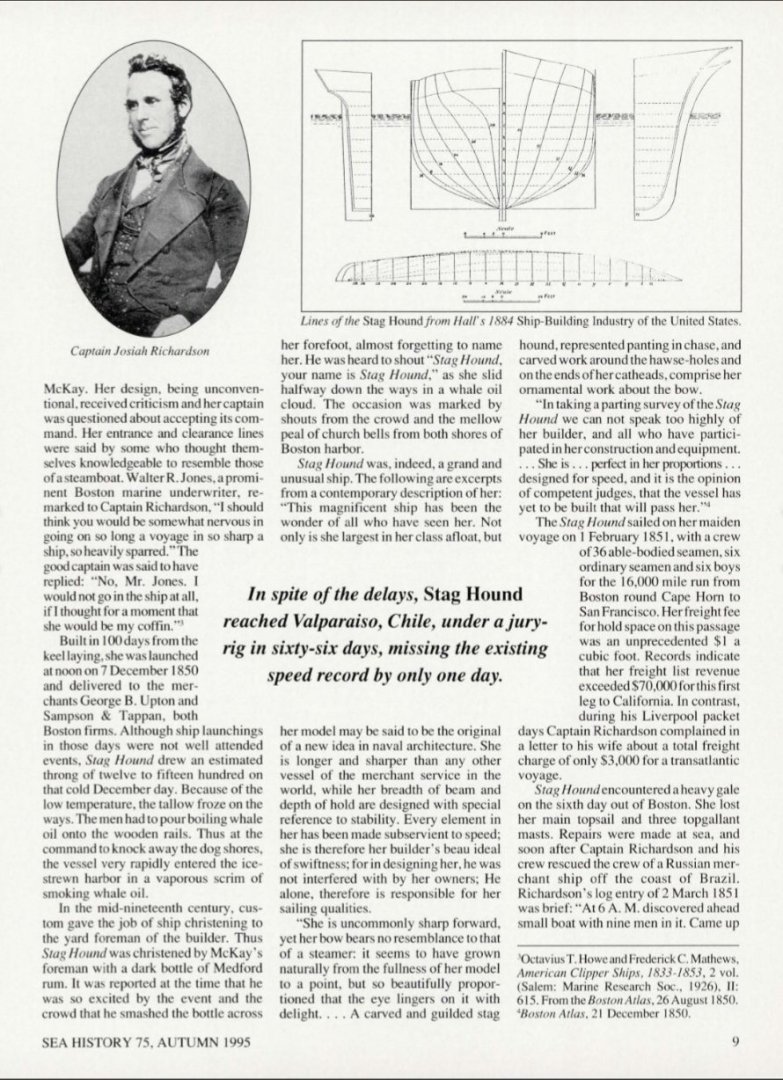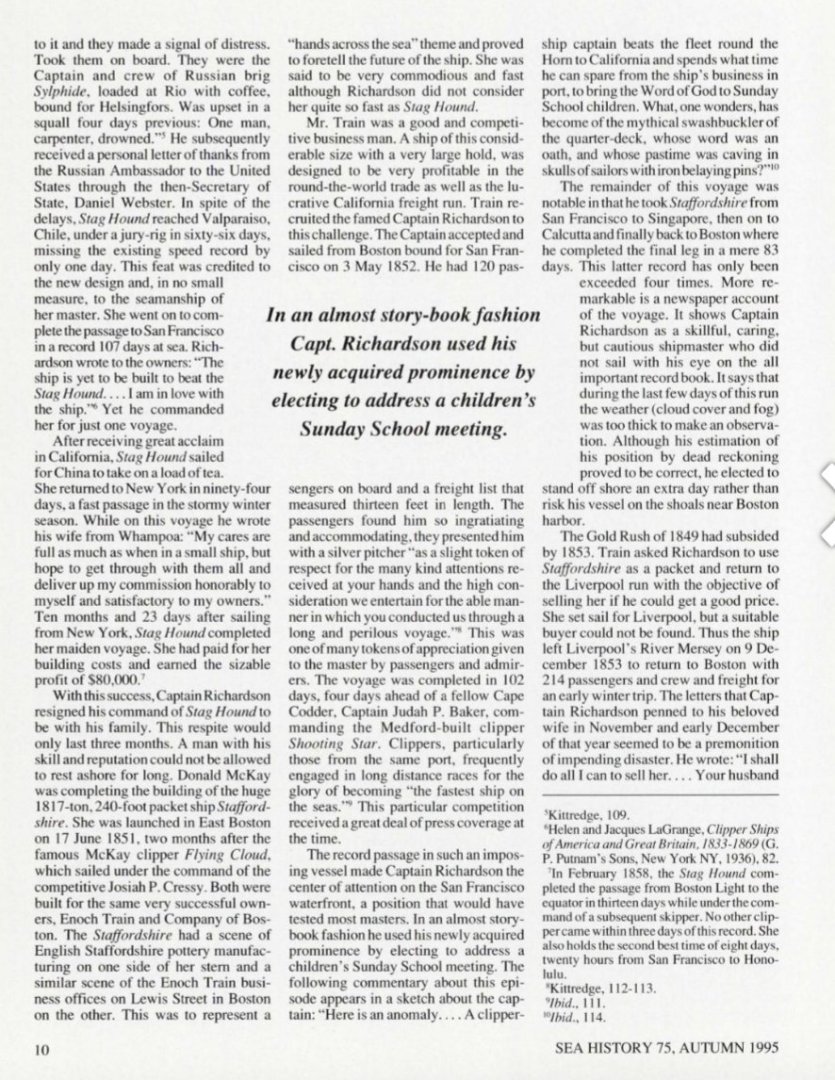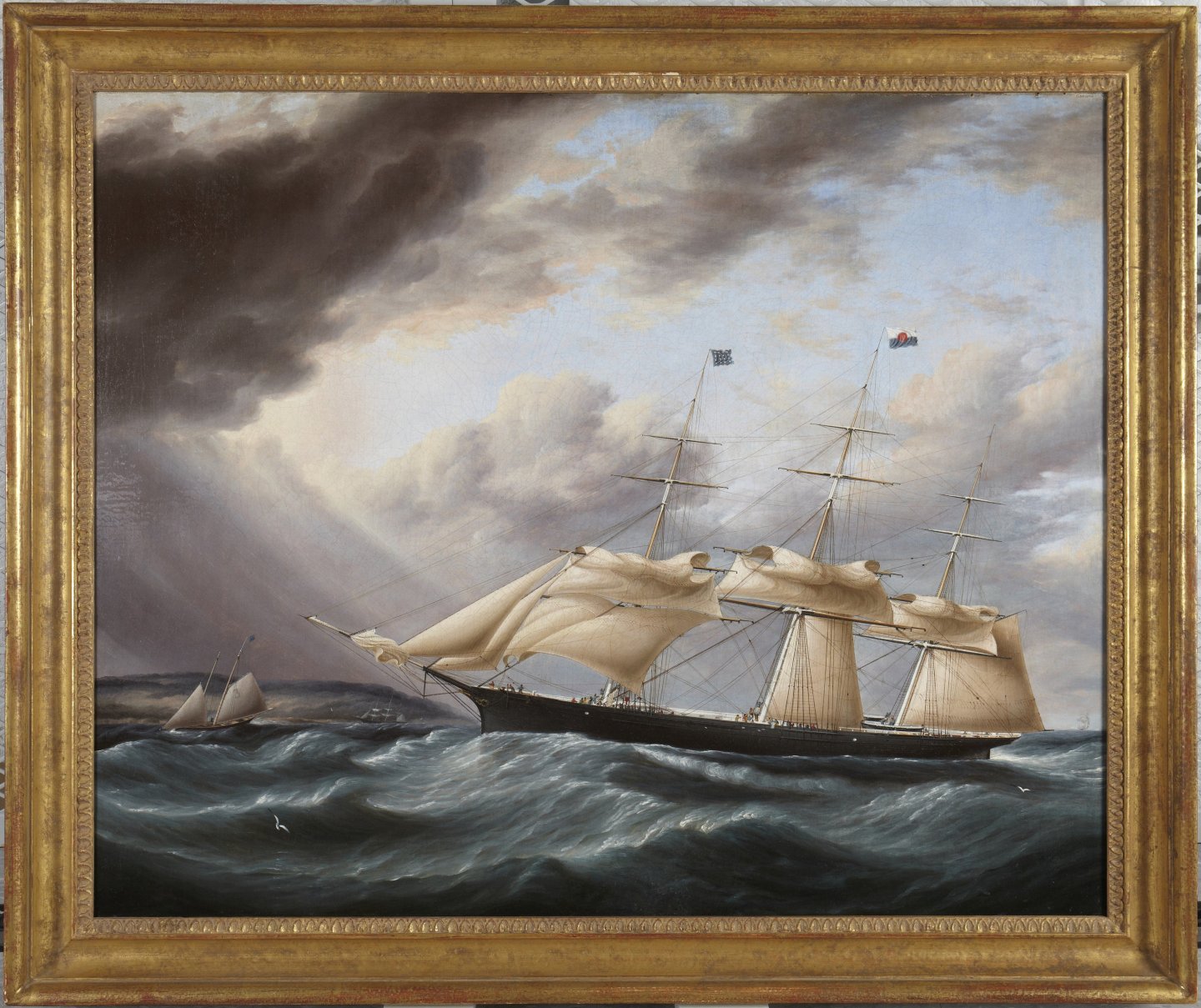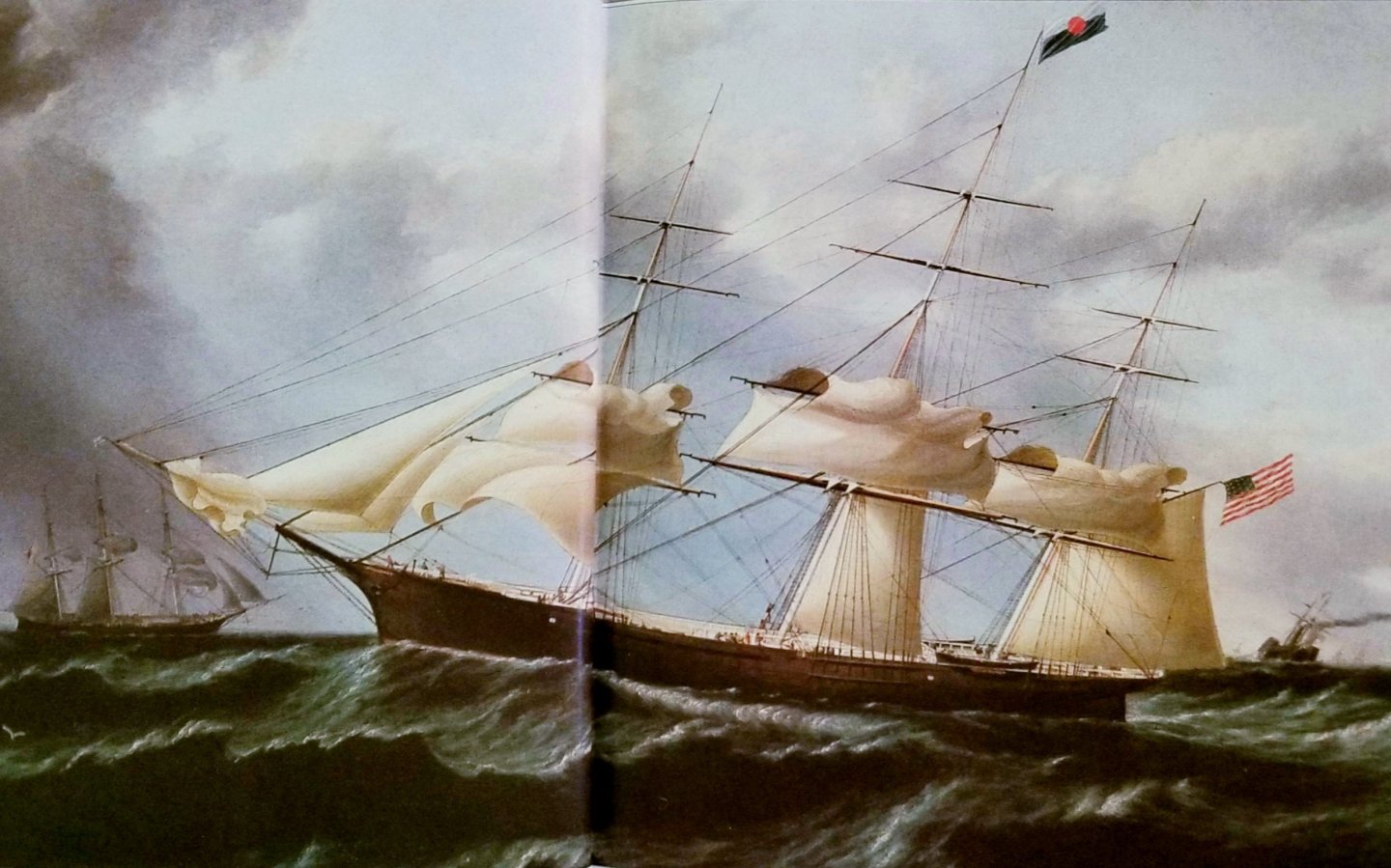-
Posts
2,168 -
Joined
-
Last visited
Content Type
Profiles
Forums
Gallery
Events
Everything posted by ClipperFan
-
Rob, I remember your clever use of plastic for your quite convincing gin blocks on Glory of the Seas. Teaser: there's even a short "how to" on your gin block construction process. These copper welded ones are far superior to those and they were incredible. I'm looking forward to seeing more of your detailed gin block build process. At this point, it wouldn't surprise me to discover you're actually utilizing an electron scanning microscope!
-
@Jared She's really shaping up to be a lovely tall ship.
- 431 replies
-
- Flying Fish
- Model Shipways
-
(and 2 more)
Tagged with:
-
@Jared beautifully done! I am in awe of how craftsmen like you can create such impressive yards. Now you only have 14 more to go. 😉
- 431 replies
-
- Flying Fish
- Model Shipways
-
(and 2 more)
Tagged with:
-
@Jared beautiful brass work! The high quality of your craftsmanship is impressive.
- 431 replies
-
- Flying Fish
- Model Shipways
-
(and 2 more)
Tagged with:
-
Rob, Here's a highly detailed Boston Daily Atlas description of a non McKay clipper, built by Paul Curtis, East Boston, called the Queen of the Clippers, Oct 6, 1852. This is perfect confirmation of the role Duncan McLean played in not only documenting but also promoting these maritime racehorses: http://www.bruzelius.info/Nautica/News/BDA/BDA(1852-10-06).html
-
Rob, Thanks for the compliments. I'm much more comfortable with this result than my previous efforts. It reminds me to keep in mind that we're actually working in three dimensions and not to ignore that fact. As for your conversation with Mike regarding the facts as supplied by Duncan McLean, I agree almost 100% in principle. Some mistakes have been uncovered but only by using one or two other reliable sources have we revised those specs. Three I can think of involve the upper depth of keel vs lower. In that case, Henry Hall's notes reinforced a more balanced division. Then there was the rake of the masts being reported as 4 & 1/2 per foot, when Cornelius McKay's handwritten notes confirmed it was actually 4.2" per foot. Finally there was the bowsprit seeve being 4 & 1/4" per foot and not 4 & 1/2" per foot, again confirmed by the same handwritten notes. My suspicion is that McLean probably got the notes correctly and somehow final reporting when printed included minor errors. It just reinforces that we have to constantly check and recheck these specifics to ensure final accuracy. I've also read McLean's descriptions of other clippers launched by Paul Curtiss, either of Boston or Newburyport which have just as much details as those of McKay's. Proof that Mr. McLean was in high demand for the beautiful clippers of his day.
-
Rob, Here's the revised aft fo'c'sle bulkhead with all changes you recommended: (1) both companions moved inward for better clearance below due to vessel's sharply inclined hull. (2) twin outer ladders now reside where companions were before. (3) splashrail height is down to 14" bringing total fo'c'sle bulkhead height to 32". While it's not in the sketch, I believe that iron safety rails with wires strung between them, like we saw on Glory of the Seas would be sensible to prevent a 5' fall risk, similar to that of the aft poop deck.
-
@Jared beautiful ratlines. I am impressed with the patience and persistence you display in this endeavor. You might want to get further away from your subject and then use the zoom feature on your cell phone to eliminate distortion. Personally, I love the bird's eye views of your impressive deck work.
- 431 replies
-
- Flying Fish
- Model Shipways
-
(and 2 more)
Tagged with:
-
@druxey Thanks for the compliment. Rob pointed out that I missed the sharp incline of the Stag Hound prow. It means where I placed companions doesn't leave enough room for internal ladders down below. I will relocate them to where the outermost set of windows are now. That frees up room for twin forecastle ladders up from the main deck for access above. We've also discussed splashrail height, lowering them to 14". That brings height to 32", same as poop deck rail height. I'm also considering making windows a little smaller, to be more in line with those seen on the front fascia of the rear coach house on Glory of the Seas.
-
Rob, Good catch! The perils of my not comprehending the sharp curvature of a vessel's prow. Point taken. Companions need to be moved inward. That opens up an outer area for twin ladders to then be mounted outside of relocated companions. This also opens up room downstairs for dual WCs. A couple other thoughts: Stag Hound is 39' shorter than Glory of the Seas I'm beginning to think maybe a 1' or 14" splashrail might make more sense than two 18" ones equalling 3'. An 18" monkey rail plus 1' splashrail equal 30", while plus 14" equals 32" (same as poop deck rails) I may narrow windows too, as they look like they're a bit large. Ladders now being outside companions, I'll put panels behind them. I appreciate your feedback.
-
@Jared Your ratlines look beautiful and authentic. That sewing method is brilliant. Afterwards, no one will know how these impressive shrouds were created.
- 431 replies
-
- Flying Fish
- Model Shipways
-
(and 2 more)
Tagged with:
-
Rob, Here's my mostly finished fore fo'c'stle bulkhead fascia. Getting the arches cleanly sketched free hand is frustrating. I should really use french curves before these could be considered ready for publication. When you consider how radically different this concept is to the standard open faced "stuffed" windlass underneath, I suspect this idea will generate quite a few discussions. Yet, this look is how I and Rob see Donald McKay's treatment for any of his clippers with a low main rail forecastle deck height. That includes obviously Stag Hound, Flying Cloud, Flying Fish and many others. Considering that, before he jumped into the California Clipper ships, McKay had extensive experience building Atlantic Packet ships, it probably shouldn't come as a surprise that he knew how to create living areas in challenging spaces. This completely alternative concept is based on evaluating facts described by Duncan McLean and our discussions on windlass placement. Once it's accepted that an 1850 Emerson-Walters complex iron geared design was the "patented" version mentioned by McLean it sets up an investigation. Where do you mount such a heavier device? Top-heavy items are anathema to sailing ships. Just ask the crew of the Vasa. That necessitates relocating it below. Another advantage of such a choice is protecting the device from the elements. In addition, by dropping down just 3 feet, it now creates a lofty 8 foot high accomodation for one watch of the crew. According to McLean's Flying Fish description, this area was not only of a generous height, but it was well lit and ventilated too. So, there would have had to been windows in that ship's even lower 4.5 foot high forecastle bulkhead. And, again others have disagreed with this interpretation but it makes sense to me. Twin waterclosets are before the companions. Placing these just forward of the ladders to below just makes pragmatic sense. It meets all criteria of the Boston Daily Atlas description. Besides which, in Stag Hound down below is exactly where twin WCs are placed for use of the captain and all ranking officers. While these windows are on full display, I imagine there were probably protective storm shutters for bad weather. Companions are in the forecastle wings. I see these as having twin folding doors which both open simultaneously and have a sliding hatch above. Twin ladders could be mounted in front of the two molded areas so as not to block window views. Since there are no photos of these wonderful ships, almost all of this has to be conceptual. We are all doing our best to realize the most authentic appearance of Stag Hound based upon the best evidence we can uncover.
-
@gak1965 it probably has to do with the size of the vessel involved or possibly naval ship standard vs civilian ones. Charles W. Morgan isn't small but she's dwarfed by "Old Ironsides." I have no idea of size comparison with USS Niagara though. It's probably a matter of whether the continuing ratlines were needed to gain the lubber's hole. In the case of the one example I shared it looks like the distance to get to that opening is short enough. Personally, since clippers had such lofty masts, I'd err on the side of caution and take ratlines to the top.
- 431 replies
-
- Flying Fish
- Model Shipways
-
(and 2 more)
Tagged with:
-
@Jared while we're on fantasies, my preference would be to own the shipping firm. Then I'd just sit back and collect fat checks 😉
- 431 replies
-
- Flying Fish
- Model Shipways
-
(and 2 more)
Tagged with:
-
@Jared You're welcome. Honestly, I find the idea of hanging out upside down on them futtocks 40 feet in the air an intimidating thought. I'd probably squeeze my a-- into the shrouds through the lubber's hole until I got my sea legs.
- 431 replies
-
- Flying Fish
- Model Shipways
-
(and 2 more)
Tagged with:
-
@Jared Here's an excellent view of one of the shroud lines on the 1843 Whaler Charles W. Morgan. In her case the ratlines end at the junction of the futtock shrouds. I hope this image answers your question.
- 431 replies
-
- Flying Fish
- Model Shipways
-
(and 2 more)
Tagged with:
-
@Snug Harbor Johnny your comment about the captain of the Stag Hound being a Navy man due to the inner dog ears of tightly furled sails in the Buttersworth piece raised my curiosity. I learned that Cape Cod captain Josiah Richardson was her first commander. I haven't discovered who her following captains were yet to see if one actually had a Navy background. Captain Josiah Richardson was a lifelong sailor but didn't participate in the Navy. From the little I've read, he was a genuinely nice guy and selfless talent. This is a nice biography on him from Autumn 1995 Sea History magazine. If anyone can find a color reproduction of the beautiful Charles R Patterson Stag Hound portrait, I'd love to see it!
-
Rob, So that means all 3 skysail yards have already been sent down. Huge billowing portions are in reality upper halves of large single topsails. I could have sworn those were two seperate sails with the t'gallant yardarm hidden on top of the already reefed topsail below. This heightens dramatic impact of this scene, as you said this type of action really stresses out sails. Correct me again if I'm wrong. Isn't usual reefing procedure to pull up the sail from the bottom and reef it at several different reef points as conditions require?
-
Rob, This work by Buttersworth always impressed me that there's actually 5 yards depicted. It looks to me like there's 3 sails on fore and main. On fore it's the course, tops'l reefed to its lowest point, then t'gallant yard lowered all the way onto the tops'l while royal and skys'l are already furled tight and lowered. On the main, her course is already furled tight, tops'l reefed like fore and t'gallant dropped to take the wind out of her billowing sail, while royal and skys'l are furled tight and lowered. Mizzen's the same as the main. I read in the Time-Life description that all of this action is because of gale force wind and rain approaching from her fore starboard.
-
This second James E Buttersworth painting is at the Princeton University Art Museum and is 28.8" high × 35.9" wide. Here's a framed copy which allowed me to zoom in and see details clearer. Meanwhile, I took another look at the alternate Time-Life copy, lightened it a bit and edited it to focus on the ship. While sail positions are similar the details aren't. There's subtle differences. The odd poop deck turned rail extensions are gone and now they bracket the poop deck front instead. Interestingly enough, now there's a skylight before the mizzenmast instead. Apparantly, it seems like Buttersworth didn't have an exact description of the deck layout for Stag Hound so he must have guessed. Buttersworth remains one of my favorite maritime artists but he's not infallible. There's no indication of navel hoods or a noticeable cutwater, her staghound figurehead is barely visible and her hawse hole is overly large. Cutters and lifeboats are too skinny, there's a confusing turned rail extension which goes practically to her main shrouds while her poop deck ends back at the mizzen. Still, it's a lively piece which remains one of my favorites despite all these issues.
About us
Modelshipworld - Advancing Ship Modeling through Research
SSL Secured
Your security is important for us so this Website is SSL-Secured
NRG Mailing Address
Nautical Research Guild
237 South Lincoln Street
Westmont IL, 60559-1917
Model Ship World ® and the MSW logo are Registered Trademarks, and belong to the Nautical Research Guild (United States Patent and Trademark Office: No. 6,929,264 & No. 6,929,274, registered Dec. 20, 2022)
Helpful Links
About the NRG
If you enjoy building ship models that are historically accurate as well as beautiful, then The Nautical Research Guild (NRG) is just right for you.
The Guild is a non-profit educational organization whose mission is to “Advance Ship Modeling Through Research”. We provide support to our members in their efforts to raise the quality of their model ships.
The Nautical Research Guild has published our world-renowned quarterly magazine, The Nautical Research Journal, since 1955. The pages of the Journal are full of articles by accomplished ship modelers who show you how they create those exquisite details on their models, and by maritime historians who show you the correct details to build. The Journal is available in both print and digital editions. Go to the NRG web site (www.thenrg.org) to download a complimentary digital copy of the Journal. The NRG also publishes plan sets, books and compilations of back issues of the Journal and the former Ships in Scale and Model Ship Builder magazines.

